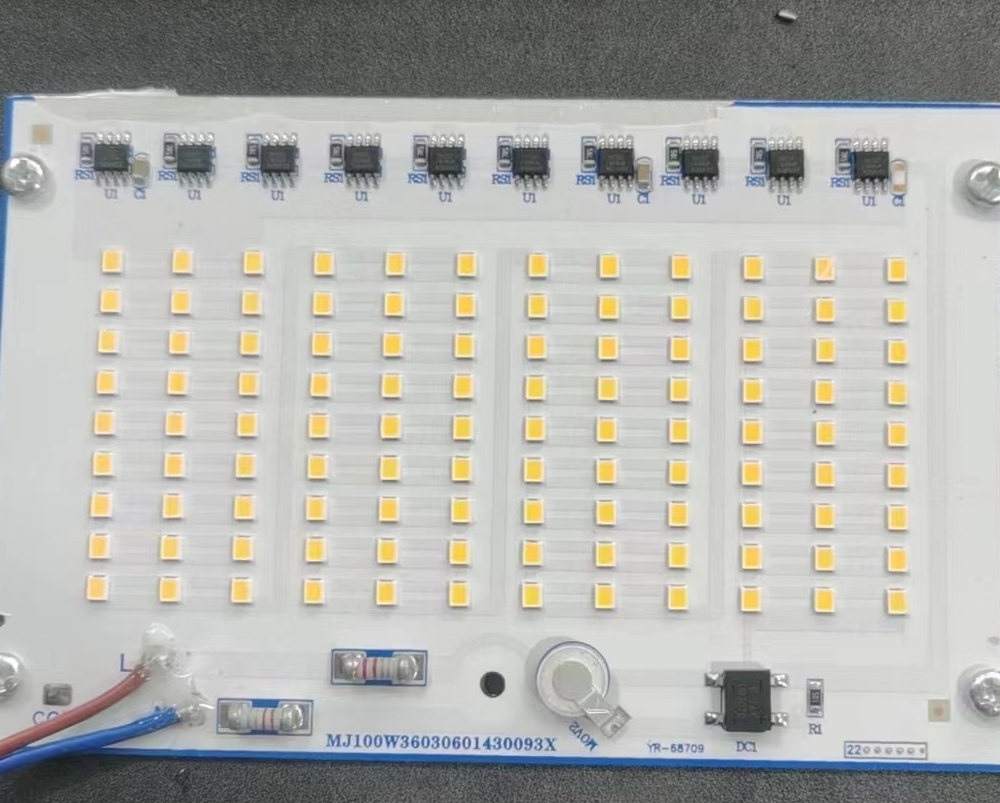LED lighting is becoming increasingly popular in the modern world due to its many benefits such as energy efficiency, low heat emissions, and long lifespan. In order to power LED lights, drivers are used to convert the voltage from the power supply to the voltage required by the LED.
There are two main types of LED drivers: linear and DOB. This article will discuss the differences between the two types of drivers and provide an overview of their advantages and disadvantages.
Linear LED Drivers:
Linear LED drivers are the simplest type of LED driver, and they are commonly used in low-power LED applications. Linear drivers operate by regulating the current that flows through the LED in a linear fashion, hence the name. The voltage that is supplied to the LED is regulated using a resistor, which causes the voltage to drop across the resistor and provides a constant current to the LED.
Advantages:
One of the main advantages of linear LED drivers is their simplicity. They are easy to design and implement, and they are also very reliable since they have no electronic components that can fail. Linear LED drivers also offer excellent dimming capabilities since they do not generate any high-frequency noise.
Disadvantages:
One of the biggest disadvantages of linear LED drivers is their inefficiency. Linear drivers can waste a lot of energy since they regulate voltage by dropping it across a resistor. This causes energy to be lost as heat, which reduces the overall efficiency of the system. Linear LED drivers are also limited in terms of the amount of power they can handle, which makes them unsuitable for high-power LED applications.
DOB (Driver on Board) LED Drivers:
DOB (Driver on Board) LED drivers are a type of LED driver that are integrated into the LED module itself. DOB drivers are essentially a combination of an LED driver and an LED module, which makes them more compact and easier to install than other types of LED drivers. DOB drivers operate by regulating the current that flows through the LED using a switching regulator.
Advantages:
One of the biggest advantages of DOB LED drivers is their efficiency. DOB drivers can achieve very high levels of efficiency, which makes them ideal for high-power LED applications. DOB drivers also have a very small form factor, which makes them ideal for use in applications where space is limited. DOB drivers also have excellent reliability since they have no external components that can fail.
Disadvantages:
One of the main disadvantages of DOB LED drivers is their complexity. DOB drivers are more complex than linear drivers since they require a switching regulator to regulate the current that flows through the LED. This complexity can make DOB drivers more expensive to produce and more difficult to troubleshoot if problems arise. DOB drivers also generate high-frequency noise, which can interfere with other electronic devices.
Comparison:
Linear and DOB LED drivers are both used to power LED lights, but they differ in their approach to regulating the current that flows through the LED. Linear LED drivers use a resistor to regulate voltage, while DOB LED drivers use a switching regulator. This fundamental difference results in a number of key advantages and disadvantages for each type of driver.
In terms of efficiency, DOB LED drivers are far superior to linear drivers. DOB drivers can achieve very high levels of efficiency, which makes them ideal for high-power LED applications. Linear drivers, on the other hand, are relatively inefficient and can waste a lot of energy as heat.
In terms of simplicity, linear drivers have the advantage. Linear drivers are easy to design and implement, and they are also very reliable since they have no electronic components that can fail. DOB drivers, on the other hand, are more complex and require a switching regulator to regulate the current that flows through the LED.
In terms of form factor, DOB drivers have the advantage. DOB drivers are integrated into the LED
When it comes to dimming capabilities, both linear and DOB drivers offer excellent performance. Linear drivers do not generate any high-frequency noise, which makes them ideal for use in applications where high-frequency noise could be a problem. DOB drivers, on the other hand, can generate high-frequency noise, but this can be mitigated through the use of appropriate filters.
In terms of cost, linear drivers have the advantage. Linear drivers are simple and inexpensive to produce, which makes them a cost-effective solution for low-power LED applications. DOB drivers are more complex and require more advanced manufacturing processes, which can make them more expensive to produce.
However, both linear and DOB LED drivers have their advantages and disadvantages, and the choice between the two will depend on the specific application requirements. Linear drivers are simple, reliable, and cost-effective, but they are relatively inefficient and unsuitable for high-power LED applications. DOB drivers are more complex, but they offer superior efficiency and a smaller form factor, which makes them ideal for high-power LED applications where space is limited.
Ningbo Freelux is a professional LED lighting manufacturer that offers a wide range of LED lighting products, including linear and DOB LED drivers. Their products are designed to meet the highest standards of quality and performance, and they are suitable for a wide range of applications. If you are in need of LED lighting products, Ningbo Freelux is an excellent choice.
